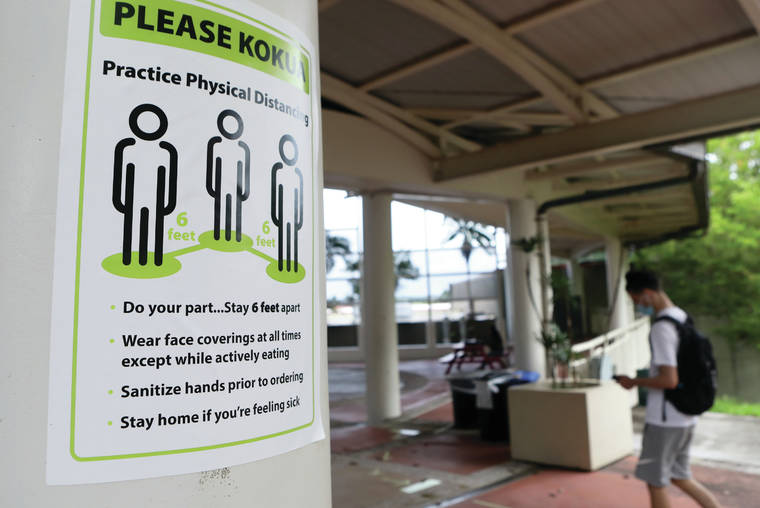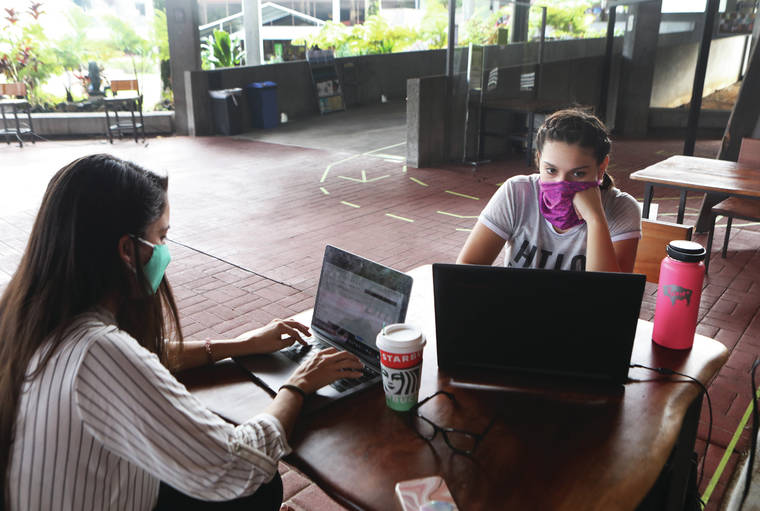Two clusters of COVID-19, stemming from social gatherings on the Big Island, have resulted in 63 cases, according to a new “cluster report” released Thursday by the state Department of Health.
The DOH this week began releasing weekly cluster reports to help illustrate COVID-19 trends throughout the state.
According to the department, public health officials study the clusters to identify risk factors, design intervention strategies and prevent further infection.
A cluster is two or more confirmed or probable coronavirus cases linked to a particular site or event within a 14-day period, as long as those cases don’t have outside exposure to each other.
The weekly report, which looks at the prior 14 days, identifies clusters in correctional facilities, educational settings and shelters; bars and night clubs, food suppliers and restaurants; occupational settings, including travel, lodging and tourism; social gatherings; and places of worship.
The information in the report, however, isn’t new for Mayor Harry Kim, who said most Big Island COVID-19 cases are still in West Hawaii.
“For us, we have been given this information for a long time,” he said.
The information from the DOH is how the county knows where to focus its testing efforts, he said.
Kim said he has met with District Health Officer Eric Honda either in person or by phone seven days a week since February.
Even with close friends and family, Kim said the way to reduce infections is simple: wear face masks and follow the rules of social distancing and gatherings.
“(Residents) are the cause of spread on the island, for the most part,” the mayor said.
Community spread of COVID-19 is evident in the new report.
Although it didn’t highlight the Big Island clusters specifically, the report said a case investigation involving an intermediate school on Oahu required contact tracing more than 100 people because of the fact that an infected middle school student moved to different classrooms throughout the day.
According to the report, some classrooms lacked sufficient space to implement 6-foot distancing between desks, but universal masking policies were in place campuswide.
The school mandated a two-week quarantine and advised testing for all students and teachers who shared a classroom with the individual, the report states.
Only one additional case was identified: a student sitting directly in front of the infected individual for a full class period the day the initial student became symptomatic.
Multiple clusters in Hawaii also have involved college students attending parties in dormitories, according to the report.
One cluster on Oahu was traced to a dorm-based Halloween party attended by students at multiple universities. Five cases have so far been identified.
Coworkers eating meals together also has been identified as a risk factor for virus transmission.
The report states that an investigation at an elementary school found four COVID-19 cases among staff members who regularly ate lunch together.
A new cluster report will be published each Thursday at health.hawaii.gov/coronavirusdisease2019/.
Email Stephanie Salmons at ssalmons@hawaiitribune-herald.com.









